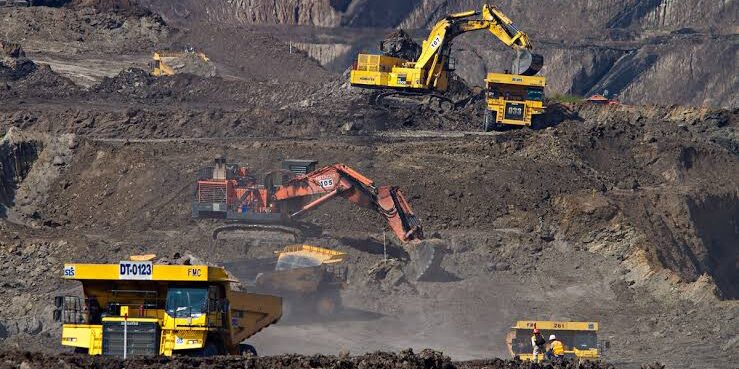As global competition intensifies over critical minerals, Türkiye steps forward as a rising force with game-changing potential.
In Charlie Chaplin’s The Gold Rush, prospector Big Jim jubilantly declares, “I’ve found it! A mountain of gold!”—clutching a nugget barely larger than his hand. It’s a moment of discovery, full of promise, but viewers are left wondering: can a handful of metal deliver the security and wealth of an actual mountain?
That question mirrors today’s global rare earth element (REE) scramble—where geopolitical stakes, industrial transformation, and national security all hinge on who controls the world’s supply of these critical minerals.
The United States: A Deal with Doubt
The United States, long dependent on China for REEs, made headlines in May 2025 with a sourcing agreement signed with Ukraine. The deal grants Washington priority access to 5 million tons of REEs—triple current U.S. reserves.
But there’s a catch: these reserves are based on outdated Soviet-era surveys, lie beneath active conflict zones, and remain technically and financially difficult to access. The U.S. may have struck a deal on paper, but whether it can extract anything of value remains uncertain.
The agreement also spans over 55 other natural resources, including oil and gas. Yet given that large swathes of Ukraine’s mineral-rich east remain contested or under Russian influence, investors face high risk—akin to prospecting in a minefield.
As Washington continues to rely on its single domestic source—California’s Mountain Pass mine—it may soon require more than sourcing deals. A second Marshall Plan could be needed to bring any meaningful supply online.
China: Still Steps Ahead
Meanwhile, China continues to solidify its dominance in the global REE supply chain. As of 2025, it accounts for more than 70% of global production and continues to invest strategically across Africa and Central Asia.
By 2029, Chinese companies are projected to control 40% of Africa’s rare earth output, with major stakes in Tanzania (Ngualla), Malawi (Songwe Hill), and Uganda (Makuutu). In April 2025, China’s East Hope Group signed a $12 billion deal to build a massive processing hub in Kazakhstan, just weeks after a new 20-million-ton discovery in Karaganda.
Beijing has also secured mining rights in Kyrgyzstan, further anchoring its presence across Central Asia. While others discuss decoupling, China is building entire ecosystems.
Greenland: The Arctic Chessboard
The world’s major powers are also eyeing Greenland—a frozen frontier with an estimated 1.5 million tons of rare earth oxides (REO). One deposit alone could meet 15% of global demand, if legal and environmental barriers can be cleared.
Beijing has sought entry via partnerships and acquisitions, but has been repeatedly blocked by local regulation, U.S.–EU diplomatic pressure, and a 2021 law prohibiting uranium co-mining. Washington, backed by the EXIM Bank, is pushing private investment, while the EU courts Greenland through Denmark to secure its raw material ambitions.
For now, Greenland remains in play—watched closely by China, courted by Washington, and quietly drawn toward Brussels.
Türkiye: A Rare Earth Breakthrough
Amid this complex global race, Türkiye is quietly emerging as a serious contender—and possibly a future linchpin in a multipolar rare earth supply chain.
A recent report by the National Intelligence Academy (NIA) confirmed that Türkiye’s Eskişehir/Beylikova deposit holds an estimated 694 million tons of rare earth elements—making it the second-largest reserve in the world after China’s Bayan Obo mine.
Unlike other claims built on aging data or war-zone uncertainty, Türkiye’s reserves are proven—and already being developed.
- A 10,000-ton pilot facility is operational
- A full-scale processing target of 570,000 tons annually is underway
- Türkiye aims to be Europe’s primary REE hub within the next decade
This positions the country not as a substitute for China, but as a strategic alternative: a bridge between East and West, within the EU Customs Union, and with access to both regional and global markets.
From Raw Material to Strategic Autonomy
With the global REE market forecast to grow from $325 billion in 2024 to $770 billion by 2040, Türkiye is shaping its future around more than extraction. A 10-year roadmap is in place to transition from raw material exporter to value-added producer and tech enabler—offering refinement, application, and innovation within its borders.
Its strategic advantages are hard to ignore:
- Geographic proximity to European industry
- Established port infrastructure
- Political neutrality in the U.S.-China rivalry
- Deepening industrial policy alignment with EU standards
Most crucially, Türkiye presents an alternative in an increasingly fragile global supply chain. As China tightens its grip—recently halting several REE exports to the U.S.—and as other regions struggle with feasibility, Türkiye’s emergence could provide stability, competition, and cooperation.
Conclusion: Not Just Catching Up—Breaking Ahead
The rare earth race is no longer defined solely by mining; it is shaped by who can control the entire value chain, from extraction to advanced manufacturing. Türkiye is not just a latecomer—it is a disruptive new entrant, and potentially a transformative player in the global energy and technology landscape.
With vast reserves, credible infrastructure, and increasing global interest, Türkiye is positioning itself not merely as a resource-rich nation—but as a rare earth power in its own right.


